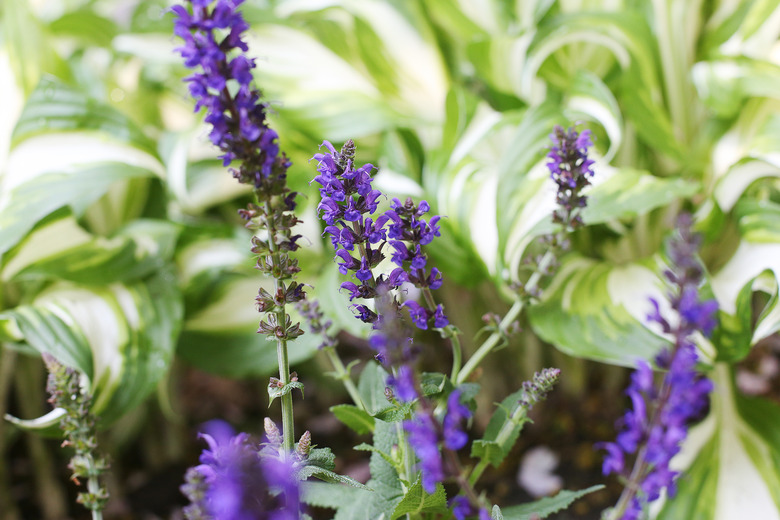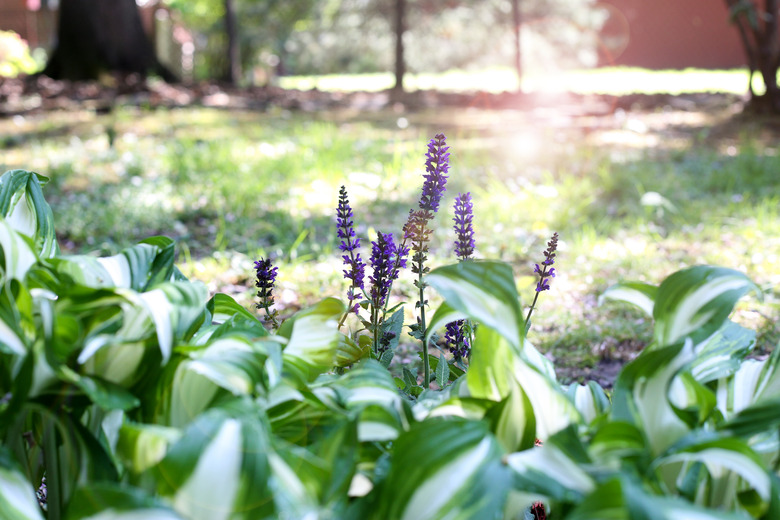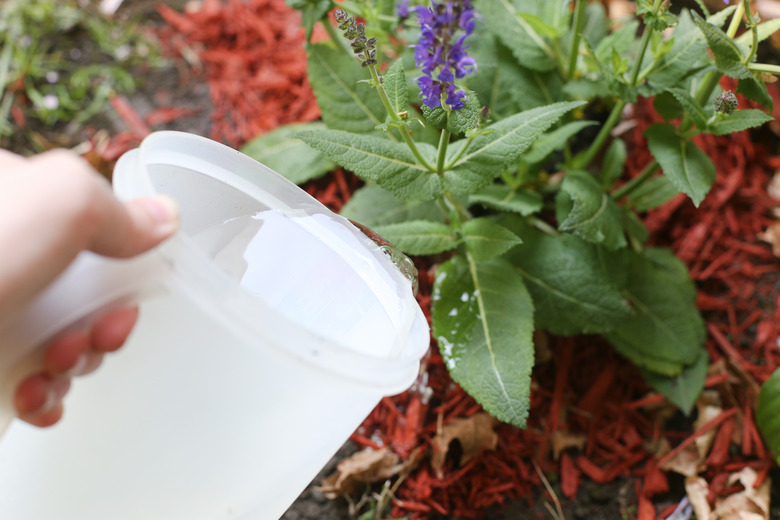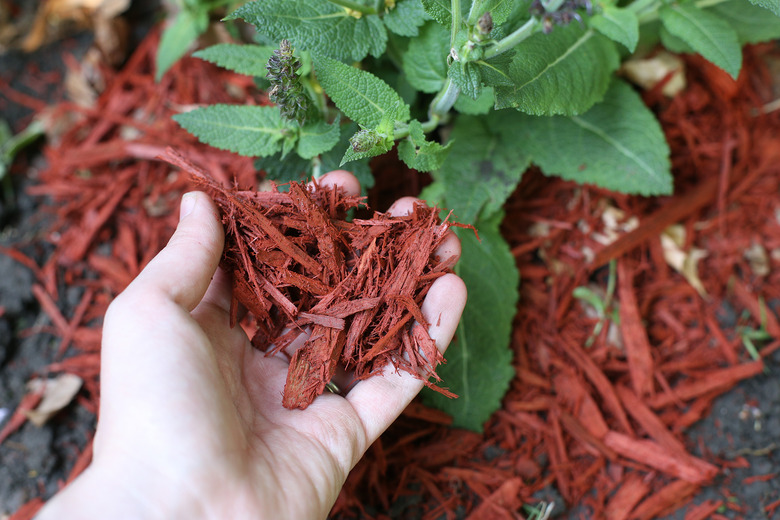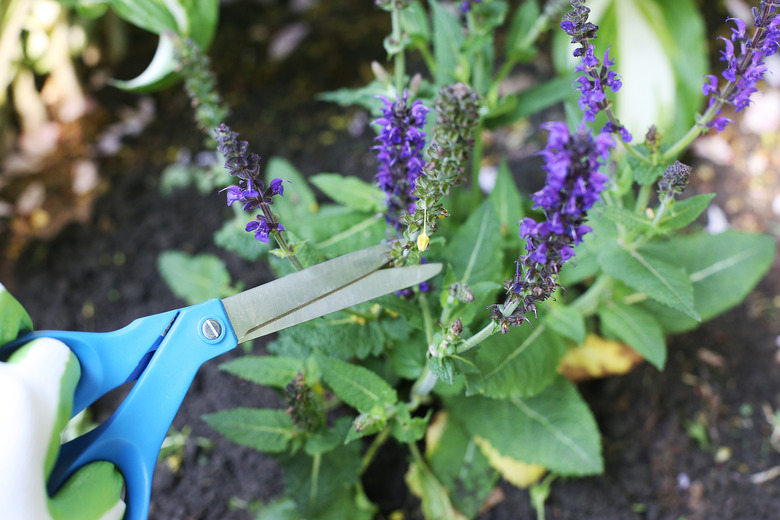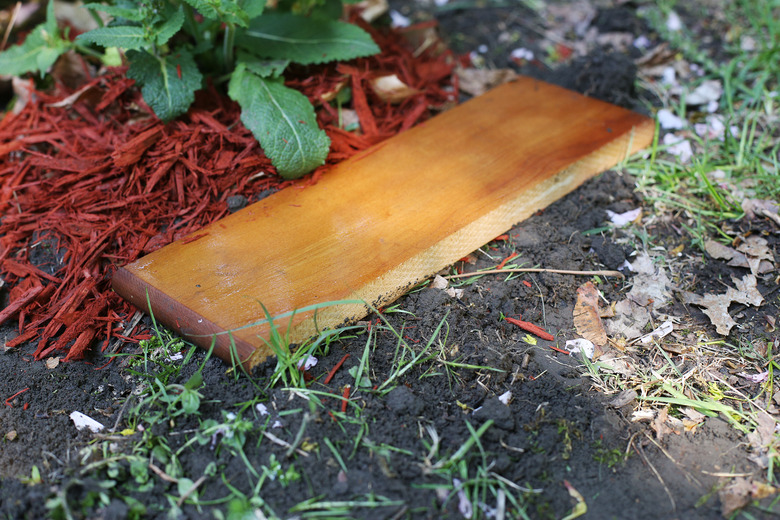How To Care For Purple Salvia
Hummingbirds, butterflies and honeybees fill the air when your purple salvia (Salvia spp.) blooms. A magnet for wildlife, the salvias range from annuals to large shrubs. Among the purple salvias often found in gardens is perennial salvia (Salvia nemorosa), also known as meadow sage, and its many cultivars. Simple to grow and care for, perennial salvia resists heat and drought, though it prefers regular watering during the dry summer season.
A Place in the Sun
A Place in the Sun
The 1- to 3-foot-tall and equally wide perennial salvia thrives in sunny, well-drained, sandy to normal soil. When planted amid other perennials in a border, it enjoys a moist soil, although it also tolerates drought conditions. While perennial salvia thrives in U.S. Department of Agriculture plant hardiness zones 3 through 8, some of the cultivars, such as "Plumosa" and "Caradonna" are less cold tolerant, preferring USDA zones 4 through 8 and 5 through 9, respectively.
Heat and Drought Tolerant
Heat and Drought Tolerant
Salvias are relatively heat and drought tolerant, although regular watering encourages continuous blooming from early summer until frost, depending on the cultivar. Adding 1 inch of water, or 6 gallons for every 9 square feet of soil, weekly, is sufficient for mature perennial salvias during the hot summer months. New transplants need additional water to keep the soil consistently moist, and they also require light afternoon shade during the hottest part of the day until they are fully established in the garden.
Feed the Salvia Gently
Feed the Salvia Gently
In general, salvias do not require fertilizing. One inch of compost raked over the soil in spring provides nutrients to the plants without overfeeding them. If salvias receive too much fertilizer or are planted in a rich soil, the stems tend to flop over. An additional 2 inches of mulch raked over the soil helps retain moisture and adds additional nutrients as the mulch slowly decomposes over the growing season.
Encourage Reblooming With Pruning
Encourage Reblooming With Pruning
After the first blooms begin to fade, deadhead the fading blossoms with scissors or anvil pruners. Wear gloves and safety glasses, and sterilize the scissors between cuts with a solution of equal parts water and rubbing alcohol. Removing the old flowers encourages reblooming in most salvias, including perennial salvia. If the plants become leggy during the growing season, simply snip the foliage back by up to one-third. In warm climates, refresh perennial salvia by pruning the entire plant back by one-third to one-half in spring. In colder climates, cut the plant back to within 3 to 4 inches of the soil when the foliage dies back at the arrival of winter cold.
Monitor for Pests
Monitor for Pests
Perennial salvia are a tasty treat for aphids, spider mites and whiteflies — but not deer or rabbits. Remove insect pests by spraying the plants with a strong stream of water to knock them off the tender leaves, buds and flowers. If slugs and snails become a problem, hand-pick the snails or dampen the soil and lay a board over it before nightfall. In the morning, lift the board and dispose of the snails and slugs that are hiding from the sun by dropping them into a bucket of soapy water.
